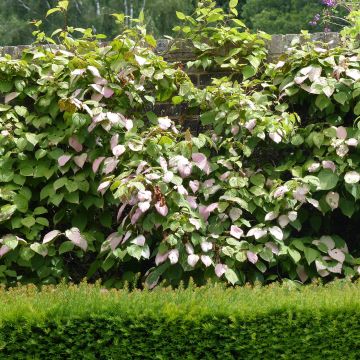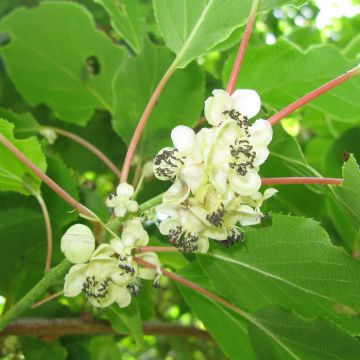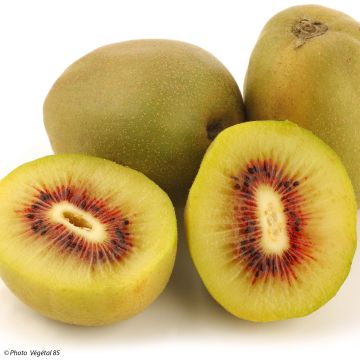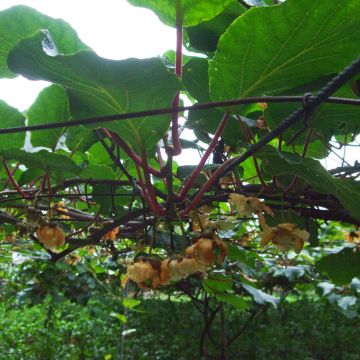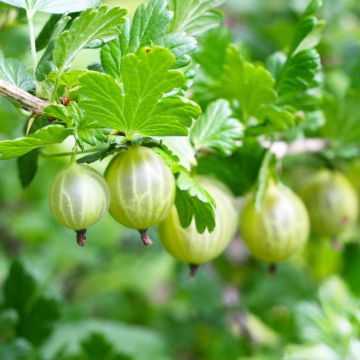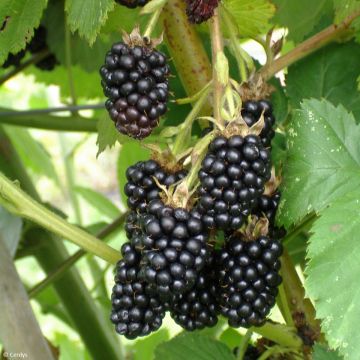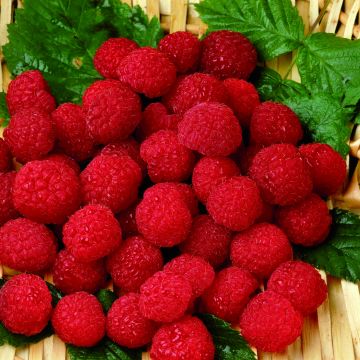

Kiwi Plant kiw'Happy (female) - Actinidia deliciosa
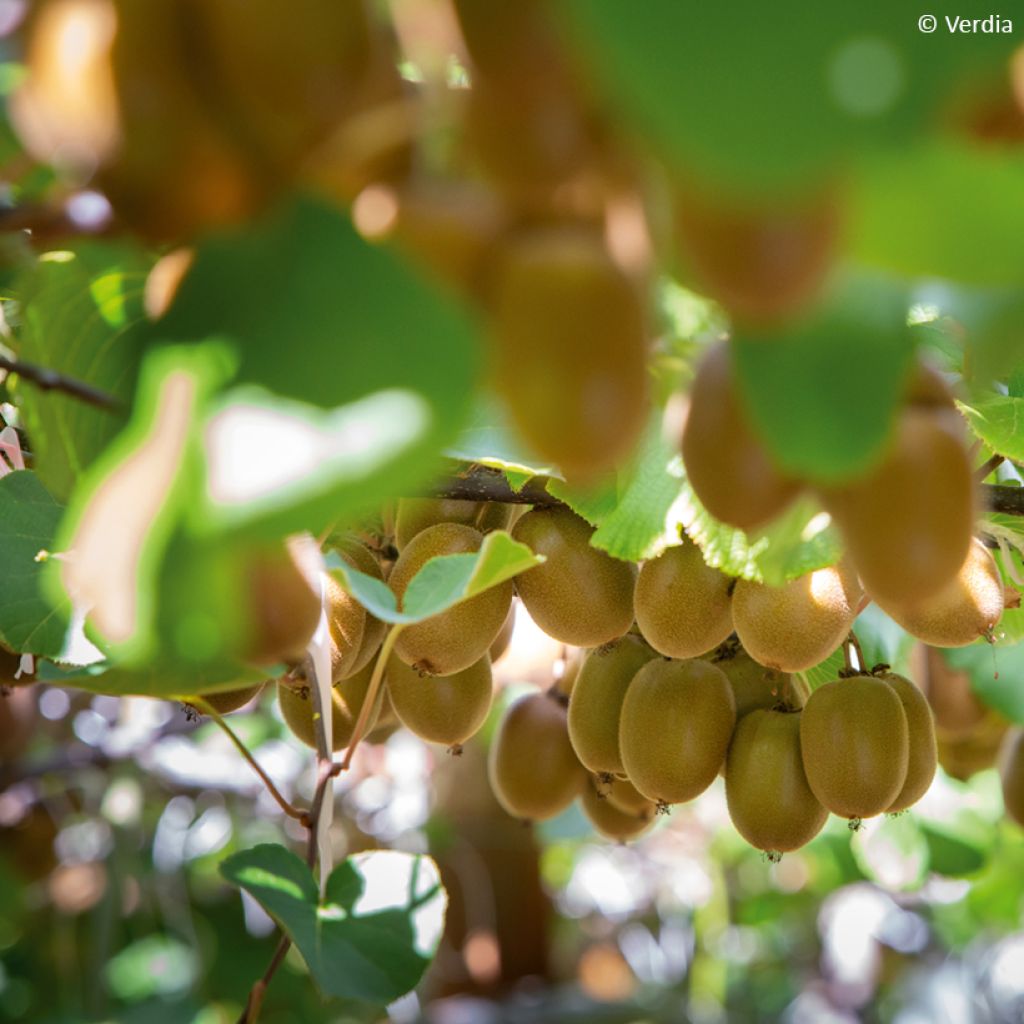

Kiwi Plant kiw'Happy (female) - Actinidia deliciosa


Kiwi Plant kiw'Happy (female) - Actinidia deliciosa
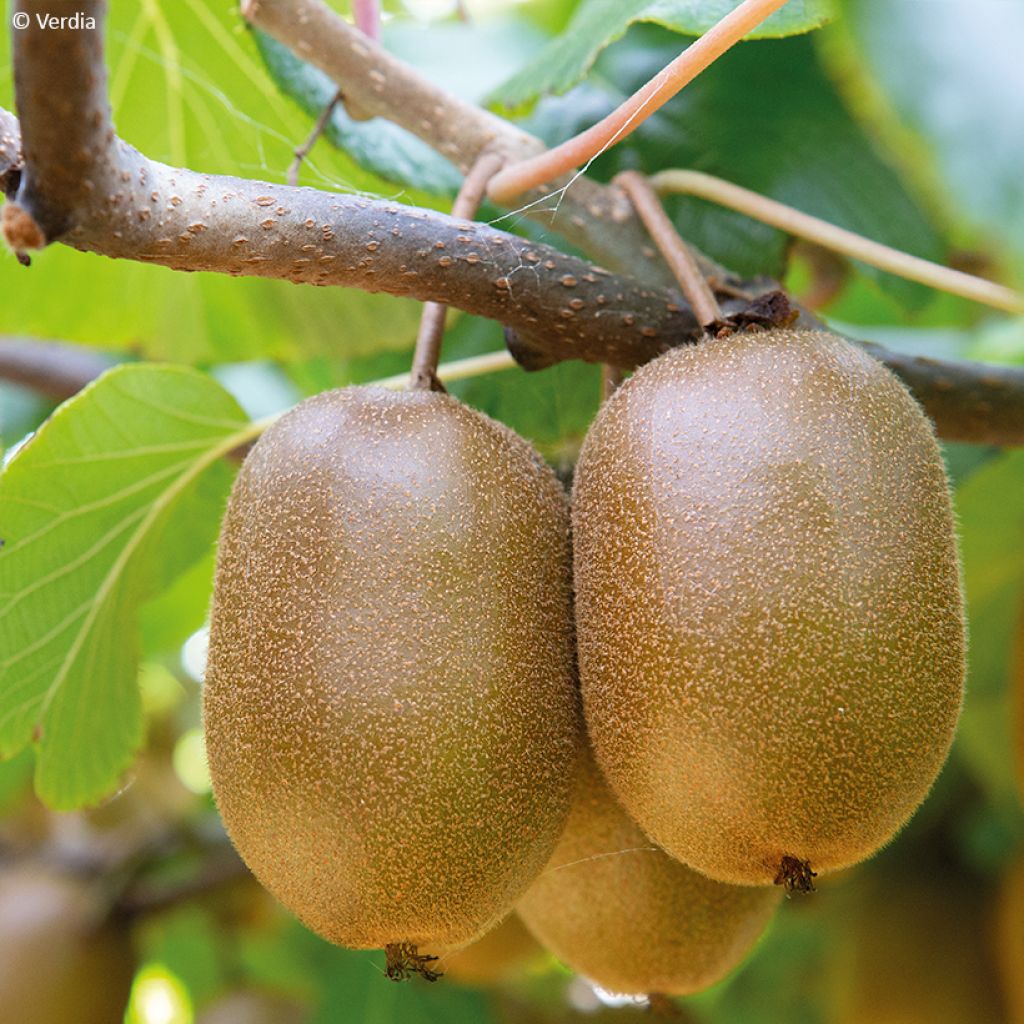

Kiwi Plant kiw'Happy (female) - Actinidia deliciosa


Kiwi Plant kiw'Happy (female) - Actinidia deliciosa
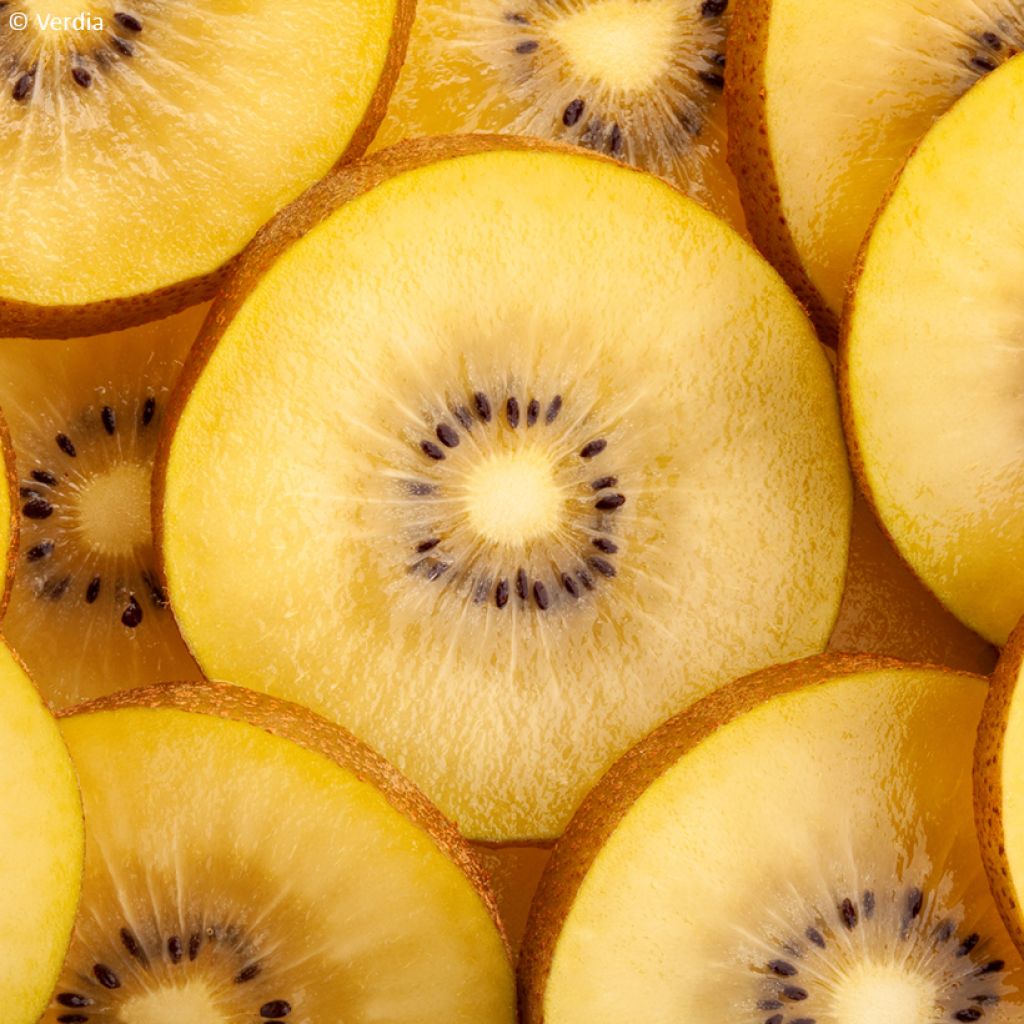

Kiwi Plant kiw'Happy (female) - Actinidia deliciosa


Kiwi Plant kiw'Happy (female) - Actinidia deliciosa


Kiwi Plant kiw'Happy (female) - Actinidia deliciosa
Kiwi Plant kiw'Happy (female) - Actinidia deliciosa
Actinidia deliciosa kiw'Happy femelle
Kiwi, Chinese gooseberry
This item cannot be shipped to the selected country
Delivery charge from €5.90
More information
Schedule delivery date,
and select date in basket
This plant carries a 6 months recovery warranty
More information
We guarantee the quality of our plants for a full growing cycle, and will replace at our expense any plant that fails to recover under normal climatic and planting conditions.
From €5.90 for pickup delivery and €6.90 for home delivery
Express home delivery from €8.90.
Description
The female Actinidia deliciosa 'Kiw'Happy is a variety with very attractive and delicious golden yellow fruits. This vigorous climber can exceed 5 m in height and cover a support as wide as a pergola or a veranda. Its large, almost round to oval leaves and its exuberance give it an almost tropical look. It produces a lovely spring flowering that requires the presence of a nearby male plant to produce the well-known reddish-brown fruits. These have a sweet, juicy yellow flesh and are enjoyed in October and November. Relatively hardy, the plant grows in sunny, non-calcareous, fertile, and moist soil.
Actinidia deliciosa is part of the small family of Actinidiaceae to which it has given its name. The Kiwi has several dozen species, mostly mostly dioecious climbing vines: there are male and female plants, therefore requiring their common presence to obtain fruits. Different groups of Kiwis are distinguished, mainly the Kiwai (Actinidia arguta) or Siberian Kiwi with small edible fruits, an ornamental Kiwi (Actinidia kolomikta) with green leaves whose tips turn pink and white, and the most famous of all thanks to New Zealand nurserymen who have spread it worldwide, the Kiwi, or Actinidia deliciosa, formerly called Actinidia chinensis due to its Chinese origin. Originating from the Hubei province in central China, this vigorous climber grows up to 8 m in height, and its long flexible stems can grow up to 3 m and reach the diameter of a finger in one season. This deciduous climber is adorned with orbicular to oval leaves, 8 to 20 cm long by 6 to 15 cm wide. In spring, short shoots develop on the previous year's branches and bear cream-white flowers, slightly fragrant, which on female plants will develop into fruits after being pollinated by the pollen from male plants. 'Kiw'Happy' is a modern selection that combines female subjects, as well as males. A male plant can pollinate 5 to 6 female plants planted in close proximity (2 to 3 m). This female plant should be planted at the base of a structure capable of supporting it, as well as another male plant. A trellis securely attached to a wall can do the trick, but it is wiser to choose a pergola. The vigorous plant can then spread out, spread its shoots with large, almost round leaves that will overlap each other, forming a dense vegetal mass that will block the sun's rays and provide strong shade.
Between April and June depending on the region, simple cream-white flowers about 4 cm in diameter bloom. Slightly fragrant, they are appreciated by bees and other pollinators. When the plant reaches sexual maturity, around 3 or 4 years old, the flowers can be pollinated by pollen from male flowers. They then produce the famous reddish-brown fruits whose hairy appearance evokes that of the Kiwi, the mascot bird of New Zealand. These are harvested in October-November and are enjoyed when they are soft to the touch. Their yellow flesh is sweet, juicy, and slightly acidic. Kiwi is rich in vitamin C, fibre, and minerals such as potassium, magnesium, and calcium, and is also an excellent source of antioxidants. If picked before ripening, the fruit continues to ripen later. It also keeps very well when refrigerated.
The Kiwi 'Kiw'Happy is hardy down to -15°C when well established, but late frost can harm it, as buds freeze around -5°C. Plant it in a somewhat sheltered and sunny location, except in the south where it tolerates some shade. Its exotic appearance will allow you to create a distinctive atmosphere, which you can enhance by accompanying it with other plants in the same spirit. Star Jasmine or Trachelospermum jasminoides is another climber capable of covering a large area and whose strong fragrance will accompany you all summer. Its small lanceolate dark green leaves will contrast with those of your Kiwi, and if you want a stronger contrast, opt for its variegated form, Trachelospermum jasminoides 'Sun Lover', slightly less vigorous, with green leaves variegated with white. And for varying effects and volumes, plant near your pergola a Decaisnea fargesii, a medium-sized shrub that will amaze your friends with its yellow star-shaped flowers that produce surprising turquoise pods in autumn, very ornamental.
Report an error about the product description
Kiwi Plant kiw'Happy (female) - Actinidia deliciosa in pictures




Plant habit
Fruit
Flowering
Foliage
Botanical data
Actinidia
deliciosa
kiw'Happy femelle
Actinidiaceae
Kiwi, Chinese gooseberry
Actinidia chinensis kiw'Happy femelle
Cultivar or hybrid
Other Kiwi bush
Planting and care
Planting Kiwi Gold is preferably done in autumn, but can be done all year round except during frost periods.
Kiwi thrives in a fresh, rich, light, and well-drained soil, preferably non-calcareous. The plant fears stagnant moisture. Place it in a sunny and sheltered location, protected from strong winds to spare its young shoots. Space the plants 3 to 4m apart. Dig a hole 50 cm in all directions. Spread a layer of gravel at the bottom and then a layer of soil mixed with peat or compost. Place the plant (the collar of the plant should be at ground level) and cover with soil. Firmly tamp down and water generously. Provide a sturdy support to help its voluble branches climb. Kiwi has running roots, which develop horizontally under the soil surface, requiring light surface hoeing if necessary. Mulch the plants for the first three winters.
Kiwi requires little maintenance, simply provide regular watering. During periods of high heat, water 1 to 2 times a week. Once established and rooted, the plant manages on its own and becomes less water-hungry. At the end of winter, bury some organic fertilizer or well-decomposed manure at the base of the plant by lightly hoeing. Train the stems as they grow, tying them without squeezing too tightly. They will wind around the support.
Resistant to insects and pests, Kiwi may however be affected by red spiders in a warm and dry environment. To eliminate them, lightly mist the foliage and soil regularly.
Planting period
Intended location
Care
This item has not been reviewed yet - be the first to leave a review about it.
Berries
Haven't found what you were looking for?
Hardiness is the lowest winter temperature a plant can endure without suffering serious damage or even dying. However, hardiness is affected by location (a sheltered area, such as a patio), protection (winter cover) and soil type (hardiness is improved by well-drained soil).

Photo Sharing Terms & Conditions
In order to encourage gardeners to interact and share their experiences, Promesse de fleurs offers various media enabling content to be uploaded onto its Site - in particular via the ‘Photo sharing’ module.
The User agrees to refrain from:
- Posting any content that is illegal, prejudicial, insulting, racist, inciteful to hatred, revisionist, contrary to public decency, that infringes on privacy or on the privacy rights of third parties, in particular the publicity rights of persons and goods, intellectual property rights, or the right to privacy.
- Submitting content on behalf of a third party;
- Impersonate the identity of a third party and/or publish any personal information about a third party;
In general, the User undertakes to refrain from any unethical behaviour.
All Content (in particular text, comments, files, images, photos, videos, creative works, etc.), which may be subject to property or intellectual property rights, image or other private rights, shall remain the property of the User, subject to the limited rights granted by the terms of the licence granted by Promesse de fleurs as stated below. Users are at liberty to publish or not to publish such Content on the Site, notably via the ‘Photo Sharing’ facility, and accept that this Content shall be made public and freely accessible, notably on the Internet.
Users further acknowledge, undertake to have ,and guarantee that they hold all necessary rights and permissions to publish such material on the Site, in particular with regard to the legislation in force pertaining to any privacy, property, intellectual property, image, or contractual rights, or rights of any other nature. By publishing such Content on the Site, Users acknowledge accepting full liability as publishers of the Content within the meaning of the law, and grant Promesse de fleurs, free of charge, an inclusive, worldwide licence for the said Content for the entire duration of its publication, including all reproduction, representation, up/downloading, displaying, performing, transmission, and storage rights.
Users also grant permission for their name to be linked to the Content and accept that this link may not always be made available.
By engaging in posting material, Users consent to their Content becoming automatically accessible on the Internet, in particular on other sites and/or blogs and/or web pages of the Promesse de fleurs site, including in particular social pages and the Promesse de fleurs catalogue.
Users may secure the removal of entrusted content free of charge by issuing a simple request via our contact form.
The flowering period indicated on our website applies to countries and regions located in USDA zone 8 (France, the United Kingdom, Ireland, the Netherlands, etc.)
It will vary according to where you live:
- In zones 9 to 10 (Italy, Spain, Greece, etc.), flowering will occur about 2 to 4 weeks earlier.
- In zones 6 to 7 (Germany, Poland, Slovenia, and lower mountainous regions), flowering will be delayed by 2 to 3 weeks.
- In zone 5 (Central Europe, Scandinavia), blooming will be delayed by 3 to 5 weeks.
In temperate climates, pruning of spring-flowering shrubs (forsythia, spireas, etc.) should be done just after flowering.
Pruning of summer-flowering shrubs (Indian Lilac, Perovskia, etc.) can be done in winter or spring.
In cold regions as well as with frost-sensitive plants, avoid pruning too early when severe frosts may still occur.
The planting period indicated on our website applies to countries and regions located in USDA zone 8 (France, United Kingdom, Ireland, Netherlands).
It will vary according to where you live:
- In Mediterranean zones (Marseille, Madrid, Milan, etc.), autumn and winter are the best planting periods.
- In continental zones (Strasbourg, Munich, Vienna, etc.), delay planting by 2 to 3 weeks in spring and bring it forward by 2 to 4 weeks in autumn.
- In mountainous regions (the Alps, Pyrenees, Carpathians, etc.), it is best to plant in late spring (May-June) or late summer (August-September).
The harvesting period indicated on our website applies to countries and regions in USDA zone 8 (France, England, Ireland, the Netherlands).
In colder areas (Scandinavia, Poland, Austria...) fruit and vegetable harvests are likely to be delayed by 3-4 weeks.
In warmer areas (Italy, Spain, Greece, etc.), harvesting will probably take place earlier, depending on weather conditions.
The sowing periods indicated on our website apply to countries and regions within USDA Zone 8 (France, UK, Ireland, Netherlands).
In colder areas (Scandinavia, Poland, Austria...), delay any outdoor sowing by 3-4 weeks, or sow under glass.
In warmer climes (Italy, Spain, Greece, etc.), bring outdoor sowing forward by a few weeks.





































